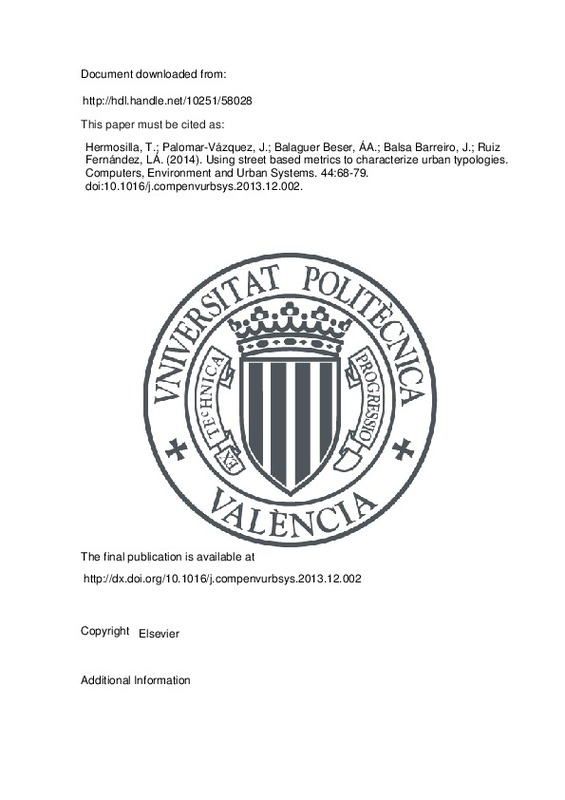JavaScript is disabled for your browser. Some features of this site may not work without it.
Buscar en RiuNet
Listar
Mi cuenta
Estadísticas
Ayuda RiuNet
Admin. UPV
Using street based metrics to characterize urban typologies
Mostrar el registro completo del ítem
Hermosilla, T.; Palomar-Vázquez, J.; Balaguer Beser, ÁA.; Balsa Barreiro, J.; Ruiz Fernández, LÁ. (2014). Using street based metrics to characterize urban typologies. Computers, Environment and Urban Systems. 44:68-79. https://doi.org/10.1016/j.compenvurbsys.2013.12.002
Por favor, use este identificador para citar o enlazar este ítem: http://hdl.handle.net/10251/58028
Ficheros en el ítem
Metadatos del ítem
| Título: | Using street based metrics to characterize urban typologies | |
| Autor: | Hermosilla, T. Balsa Barreiro, José | |
| Entidad UPV: |
|
|
| Fecha difusión: |
|
|
| Resumen: |
[EN] Urban spatial structures reflect local particularities produced during the development of a city. High spatial resolution imagery and LiDAR data are currently used to derive numerical attributes to describe in detail ...[+]
|
|
| Palabras clave: |
|
|
| Derechos de uso: | Reserva de todos los derechos | |
| Fuente: |
|
|
| DOI: |
|
|
| Editorial: |
|
|
| Versión del editor: | http://dx.doi.org/10.1016/j.compenvurbsys.2013.12.002 | |
| Código del Proyecto: |
|
|
| Agradecimientos: |
The authors appreciate the financial support provided by the Spanish Ministry of Science and Innovation in the framework of
the project CGL2010-19591/BTE, and the data made available by the Spanish Instituto Geográfico ...[+]
|
|
| Tipo: |
|







![[Cerrado]](/themes/UPV/images/candado.png)


